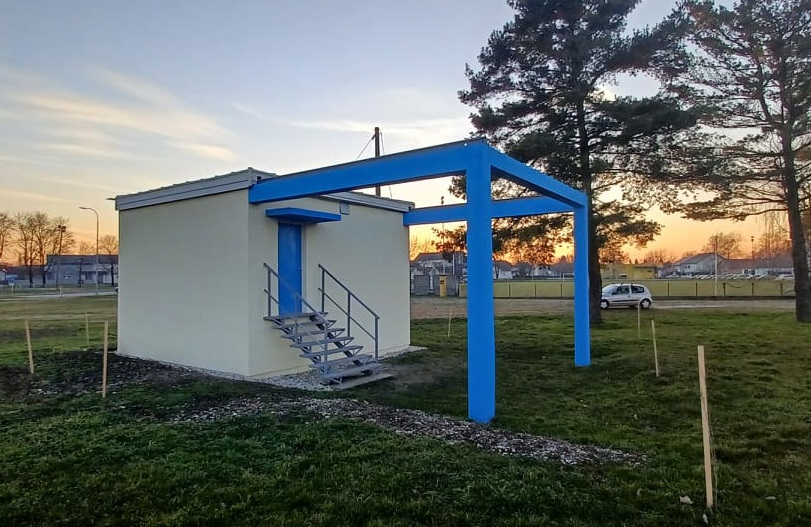
"I open my eyes to that sky high,
There I see bright stars playing.
If the bright stars hurt me,
My young heart hurts, tin."
(Međimurje original song, UNESCO intangible cultural heritage)
Although numerous traditional chants of Međimurje testify to us that the inhabitants of the region between the two waters, the Mura and the Drava, were happy to observe the stars, the first mentions of astronomy and Međimurje astronomers can be found in archives from the 18th century, and they are related to Ignac Svetomartinski – Ignac St. Szentmártony (Kotoriba 1718 – Belica, 1793).
He studied mathematics and theology in Vienna and taught quantitative theory in Graz. When King Ivan V of Portugal was looking for geographers and astronomers to explore the Amazon River, he offered the job to famous Ruđer Bošković, who did not accept it, so the opportunity was given to Ignac, who went to Lisbon, then to Brazil. There, he made astronomical observations and measurements, thanks to which the first precise maps of the Amazon basin were made. Because of his work, Portuguese King Joseph I, the successor of John V, granted our astronomer the status of royal and court mathematician and astronomer with a salary from the royal treasury.
After Ignac Svetomartinski, Međimurje astronomy is associated with Josip Štolcer-Slavenski, (Čakovec, May 11, 1896 – Belgrade, November 30, 1955), a famous Croatian composer, music pedagogue and amateur astronomer. Štolcer -Slavenski, in his work, nurtured the idea of a science that should connect astronomy and music, he called the combination astroacoustics and described it with the words – “I can’t show you unknown planets through the eyepiece of a telescope, but I can make you hear them”.
The history of organized observation and study of the sky in Čakovec began twelve years after the death of Štolcer-Slavenski when we recorded the first gathering of astronomers on October 17, 1967. On that day, the Astronomical Section of the Croatian Natural History Society Čakovec was founded, the first president was Vatroslav Merlić, and the section operated as part of the Croatian Natural History Society in Zagreb.
Members of the Section acquired basic knowledge at the observatory in Zagreb, after which they received the status of “astronomical operator” and, in addition to observing the sky, they were engaged in organizing film screenings and exhibitions. The Čakovec section grew over time, and on December 25, 1968, it changed its name to Astronomical Section HPD and Folk Techniques “Josip Slavenski” Čakovec and began working as an independent organization. At that time, the members had neither an observatory nor a telescope, so on the initiative of Čeda Tihomirović, then president of the section, and Ignac Bel, president of the Municipality of Čakovec, the construction of an observatory began in the suburban settlement of Savska Ves. The plans of the observatory were provided free of charge by the Czechoslovak astronomers of the observatories in Brno and Ondrejovo, with whom AS was in contact through HPD Zagreb, and the plans were refined by Pavao Smoljan from Čakovec. Thanks to this, as well as numerous engagements of entrepreneurs from Čakovec, the observatory was built. In April 1976, the first (and so far, the only) TASCO 108/1600 telescope was installed, and a little later that year, the procurement of equipment began, and the first cameras were purchased. The society soon changed its name again, became the Astronomical Section of Savska Ves, and started giving school lectures. The lectures are led by Zdravko Janči, and the president of the society is Marijan Pal. Members of the society also achieve significant success at national competitions and also participate in astronomy camps.
On February 21, 1984, a new era for Međimurje astronomers began, all activities were gathered under a common denominator and the Čakovec Astronomical Society was founded. As part of it, there are sections in several primary and secondary schools, so in 1989 the society had 82 members in five sections. Telescopes are also made under the guidance of Professor Josip Bajuk, glasses are procured from Slovenia, and telescope parts are made by craftsmen from Čakovec. Unfortunately, with the advent of the war years, the observatory was used for military purposes, and certain parts of the telescope disappeared, and the society itself had fewer and fewer members and finances, so it ceased to operate. The observatory fell into disrepair and remained so until 2010.
In 2010, the Vega Astronomical Society was founded, which still operates today, and gathers around twenty active members. The city of Čakovec gave the society an observatory upon its founding, and members of the society regularly make observations in it today. In addition to working in the observatory, Vega astronomers regularly hold lectures for the interested public, schools and kindergartens, and participate in educational projects. The goal of the society is the development of technical culture and astronomical activities, as well as the development and application of scientific achievements, raising the awareness of citizens about light pollution and education about its harmful effects on the environment and humans, holding competitions and similar events and participating in events organized by other associations, unions and community. The Society for Public Observations uses three telescopes, the above-mentioned Tasco 108/1600 mm motorized refractor intended for observing the Moon and nearby planets, the Maksutov MC 150/1800 SkyMax telescope and the Lunt LS60THa solar telescope suitable for observing the Sun.
